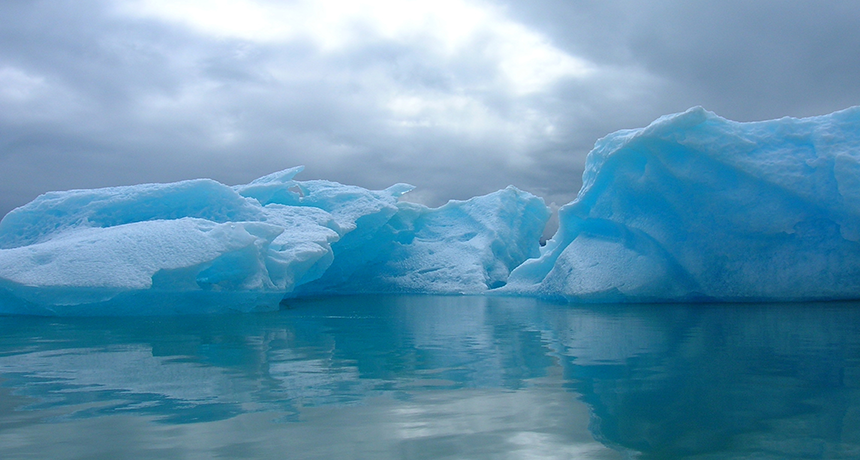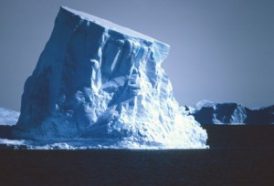Life beneath the ‘berg
Scientists find Antarctic icebergs play a new and bigger role in the climate cycle

An iceberg that has calved off of LeConte Glacier
NOAA

Icebergs are famous for keeping secrets: The bulk of these giant, icy islands floats beneath the surface of the sea. A 700-foot-tall iceberg, for example, may extend only 100 feet above water. But as new research shows, ice isn’t the only thing icebergs hide. Scientists recently found that free-floating icebergs around Antarctica deposit iron in the water. This iron acts like a vitamin, boosting the growth of tiny plants and algae nearby.
Those growing plants and algae are at the bottom of the food chain, which means they’re gobbled up by slightly bigger critters, like krill and zooplankton. And those organisms, in turn, get consumed by bigger organisms, such as fish and birds. The iron deposits are fueling whole communities of life around the icebergs.
There’s another change happening around those icebergs. Those plants and algae consume carbon in the water that had been absorbed from the atmosphere. So by eating carbon in the sea, these organisms can help remove some carbon from the air. And that could be a good thing, reducing the rate of global warming and climate change.
Until the new studies, “we didn’t know the nature of the biological communities associated with icebergs, and we certainly didn’t know their direct relationship to carbon exports,” Timothy Shaw told Science News. Shaw, who worked on the new research, is a chemist at the University of South Carolina in Columbia.
“The amount of carbon being [removed] near icebergs is twice as high as in areas away from them,”
Ken Smith told Science News. Smith is a senior scientist at the Monterey Bay Aquarium Research Institute in Moss Landing, Calif. In 2008 and 2009, he and other scientists collected data on the Antarctic icebergs, the life around them and the removal of carbon.

As people burn fossil fuels like coal and oil to produce electricity and keep cars running, the process adds carbon dioxide to the air. This form of carbon is a greenhouse gas that traps heat in the Earth’s atmosphere. We need this heat to stay alive. But the atmosphere has been warming, and too much of an increase alters climate. To understand what’s fueling global warming, scientists study how carbon moves from land to sea to air. Smith now says icebergs are part of that process.
“Icebergs should be considered by climate modelers, because the more icebergs that develop [from the breakup of glaciers], the more carbon dioxide you’ll draw out of the atmosphere,” Smith said. And that drawdown could help limit the risk of excessive global warming.
Icebergs are usually seen as warning signs of our warming planet. As the temperature increases, more icebergs break off Antarctic ice shelves and float free. As a result, the ice shelves are getting smaller, ocean temperatures are increasing, and sea level is expected to rise. This could be bad news for life in the ocean, which makes it bad news for everyone.
But just as there’s more beneath the surface of an iceberg, it turns out these giant ice cubes play a new and bigger role in climate than scientists originally thought.
POWER WORDS (adapted from the New Oxford American Dictionary)
iceberg A large floating mass of ice detached from a glacier or ice sheet and carried out to sea.
Antarctica A continent around the South Pole, situated mainly within the Antarctic Circle and almost entirely covered by ice sheets.
global warming The gradual increase in the overall temperature of Earth’s atmosphere due to the greenhouse effect caused by increased levels of carbon dioxide and other pollutants.
carbon dioxide A colorless, odorless gas produced by burning carbon and by respiration. It is naturally present in air and is absorbed by plants in photosynthesis, a chemical reaction that turns sunlight into food.







